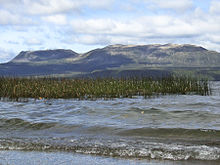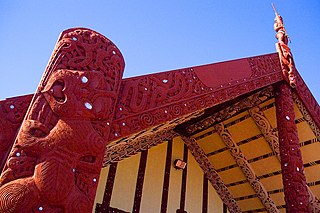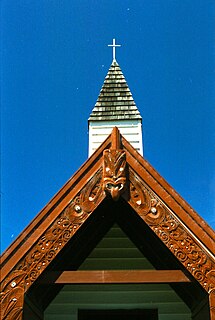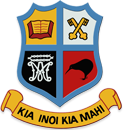
The topic of ghosts and spirits (kehua) in Māori culture is often considered a tapu subject, yet many Māori legends contain mentions of apparitions and paranormal occurrences. It is claimed that long deceased family members may appear to warn of upcoming danger, such as with the famous phantom canoe in 1886 that many reportedly saw on Lake Tarawera, that is believed to have been an omen for the volcanic eruption that occurred eleven days later. [1]

In folklore, a ghost is the soul or spirit of a dead person or animal that can appear to the living. In ghostlore, descriptions of ghosts vary widely from an invisible presence to translucent or barely visible wispy shapes, to realistic, lifelike visions. The deliberate attempt to contact the spirit of a deceased person is known as necromancy, or in spiritism as a séance.
A spirit is a supernatural being, often, but not exclusively, a non-physical entity; such as a ghost, fairy, or angel. The concepts of a person's spirit and soul, often also overlap, as both are either contrasted with or given ontological priority over the body and both are believed to survive bodily death in some religions, and "spirit" can also have the sense of "ghost", i.e. a manifestation of the spirit of a deceased person. In English Bibles, "the Spirit", specifically denotes the Holy Spirit.

Māori culture (Māoritanga) is indigenous to New Zealand and originated from, and is still part of, Eastern Polynesian culture. Māori culture also forms a distinctive part of New Zealand culture and is found throughout the world, due to a large diaspora and incorporation of motifs into popular culture. Within the Māori community, and to a lesser extent throughout New Zealand as a whole, the word Māoritanga is often used as an approximate synonym for Māori culture, the Māori suffix -tanga being roughly equivalent to the qualitative noun ending "-ness" in English.
Contents
Kikokiko are known in Māori belief as malevolent ghosts that take possession of living people, making them lose sanity. Taniwha are guardian monsters that reside in bodies of water such as rivers or lakes and can appear as sharks, whales, dragons or even floating logs. [1]
In Māori mythology, taniwha are beings that live in deep pools in rivers, dark caves, or in the sea, especially in places with dangerous currents or deceptive breakers. They may be considered highly respected kaitiaki of people and places, or in some traditions as dangerous, predatory beings, which for example would kidnap women to have as wives.

Sharks are a group of elasmobranch fish characterized by a cartilaginous skeleton, five to seven gill slits on the sides of the head, and pectoral fins that are not fused to the head. Modern sharks are classified within the clade Selachimorpha and are the sister group to the rays. However, the term "shark" has also been used for extinct members of the subclass Elasmobranchii outside the Selachimorpha, such as Cladoselache and Xenacanthus, as well as other Chondrichthyes such as the holocephalid eugenedontidans.

Whales are a widely distributed and diverse group of fully aquatic placental marine mammals. They are an informal grouping within the infraorder Cetacea, usually excluding dolphins and porpoises. Whales, dolphins and porpoises belong to the order Cetartiodactyla with even-toed ungulates and their closest living relatives are the hippopotamuses, having diverged about 40 million years ago. The two parvorders of whales, baleen whales (Mysticeti) and toothed whales (Odontoceti), are thought to have split apart around 34 million years ago. The whales comprise eight extant families: Balaenopteridae, Balaenidae, Cetotheriidae, Eschrichtiidae, Monodontidae, Physeteridae, Kogiidae, and Ziphiidae.
















